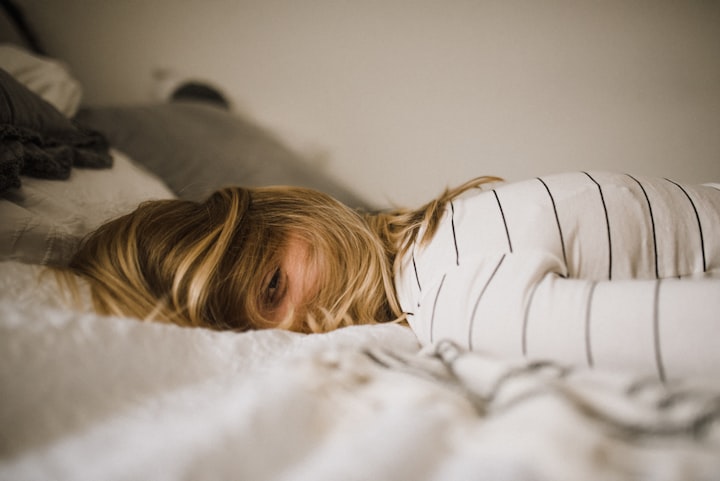Goodbye Sore Joints & Sleepless Nights
How to manage sore joints and sleep better at night.

Sore Joints & Sleepless Nights: A very common complaint.
In my daily life as a physical therapist, I get asked by many, how to sleep better and ease joint pains. Sore, stiff, and painful joints can be caused by many factors. It can come from arthritic conditions, recent injuries, or over-exercise. Interestingly enough, some of the tips I have indicated here came from some of these patients as well! I do believe we all learn from each other.
The relationship between sleep and pain is common, frequent, and complicated. Sore joints, either from the back (very common), shoulder, neck, hips, and knees can keep you up at night, Lack of sleep can, however, exacerbate the condition and make you more sensitive to pain. As a matter of fact, up to 90% of adults with chronic joint pain are unable to sleep well, according to the Cleveland Clinic.
Citing a few conditions that can cause difficulty sleeping or staying asleep from sore joints are the following: arthritis, osteoporosis, hip and knee surgeries, fractures, or fibromyalgia. Even progressive conditions such as Parkinson's disease, in patients I see, complain about sore joints and not being able to sleep well at night. In the future, I will also be sharing about Parkinsonism and strategies on how to self-manage this debilitating disease.
Even after drifting off, you may be spending fewer hours in the deep stages of sleep that are relevant to restore your body and mind. Lack of sleep can also contribute to many other health issues. This can include anxiety, depression, irritability, mood swings, obesity, diabetes, and heart conditions just to name a few.
There are, fortunately, simple behavioral changes that can help you manage the discomfort and sleep better. Here are home remedies that are worth trying, and work with your doctor to find relief.
Steps to Take at Bedtime:
1. Vary your sleeping positions. I have seen this very common with individuals who have had recent surgeries for the hips, knees, and shoulder. Try sleeping on your unaffected side with your knees and hips bent. Place a a pillow between your knees, even reaching your ankles, to take pressure off your hips, and align your spine better.

If you lie on your back, make sure your pillow supports the curve in your neck to be comfortable. For back pain sufferers, put a thin pillow under your knees to keep them slightly flexed. This eases the load on your lower back, a common site for back pain. For side sleepers, a trick I have seen work, is folding your pillow in half, and placing it under the side of the head, molding it to the neck. This eliminates pressure on the shoulder on this side as well, so you do not wake up with a stiff neck and shoulder.
2. Try using a sling. This may sound a bit weird, but if you are one who always wakes up with a sore and painful shoulder, you may want to consider this trick. Protect an aching shoulder by immobilizing it with a sling. Putting a pillow under your armpit can help too. I always advise patients with recent shoulder surgeries to do this. A majority of my patients with recent surgeries (for arthroscopic repair of rotator cuff tears) are unable to sleep in a regular bed for weeks. They sleep in a recliner. Quite a daunting task, I daresay.
3. You may consider buying a new mattress. It is unbelievable how mattresses have evolved from the simple box and spring, to the space age models with all the bells and whistles that come with a hefty price tag! However, as we do spend a lot of time on it, it may certainly be worth the investment. A firm mattress is usually preferable if you require more support. You need something that will cushion your body and support your contours.
A quick fix to a not-so-new mattress if you do not want to spend too much, is buying a memory foam bed topper. These are readily available from the major retail stores. I always do go to Amazon for more choices. These come in different heights from 2 inches to 6 inches and above, and also comes in the size of your bed. I use one, and it has made a difference.
4. Make your bedroom your sanctuary. You can always transform your bedroom into a conducive cocoon for sleeping. Sleep hygiene is especially important if you have joint issues. Darken your bedroom and block out distracting noises. Although this may be difficult for most people to part with their mobile devices, keep electronic devices out of your bedroom. (Now I hear protests, LOL!) You can turn them off at least 2 hours before retiring.
A tip from a patient, she does use her mobile device to play meditative, relaxing music from her "sleep playlist". Youtube has many selections of this type of music that can play for hours. It does help calm and rest your mind that can transform your physical state into a relaxed one, which in turn, can allow you to sleep better.
5. Strive to Maintain a consistent schedule. This may not be possible for many, but as much as possible, go to bed and rise at the same time each day. (I know, I know!) But consistency does help your biorhythm programming, so to speak. If what's at stake is your ability to sleep better, it can be worth the effort. Resist the urge to sleep in, even on weekends and holidays. Well, it is a suggestion. I for one, love my sleep-in on days that I can, too. :) Just strive to maintain that balance to allow your body to get into the rhythm of wakefulness and sleep.
6. Get out of bed and stretch. When you've tried and still can't sleep, it may be better to get up and do a few simple stretches. Try this:
Face the wall and slide up both arms as high as you can. Imagine lifting your upper body from the lower body, hold this for about 5 to 10 seconds. Synchronize this stretch with slow, deep breaths. Inhale deeply as you stretch, and exhale as you slowly lower your arms. Repeat about 5-10 times.
Another thing you can try: bring both knees to your chest, pulling them with both hands to stretch your back. Hold this position for about 10-20 seconds, also incorporating inhaling and exhaling. Close your eyes while doing this and just sense, and feel the stretch that is happening on your spine as you listen to the rhythm of your breathing.
Breathing while stretching allows better gas exchange in your lungs. Imagine more oxygen going through the blood (red blood cells carry oxygen on the body) circulating in the blood vessels within the muscles being stretched. This can induce muscle relaxation from the simple stretch.
This has worked great for some patients who have bad backs, (sciatica, back muscle cramps/spasms) arthritis, and fibromyalgia.
You can also do something boring........ until you're sleepy again. As a bonus, moving around can reduce joint pain because it decreases swelling and increases lubrication. There are many more simple stretching strategies I can share later on that can be very helpful with different conditions.
7. Try using a Heating Pad or a Cold Pack. I can never stress this enough. Sore joints can always benefit from using heat or cold pack. Not just before you sleep. It is something you can do during the day to minimize, even relieve joint discomfort at night. Now the big question I always get from patients: "When do I use a HEAT PACK or a COLD PACK?"
My answer is this: One thing to remember about the properties of heat or cold temperatures: HEAT = Expands Vs. COLD = Constricts
HEAT PACK: When your joint pain is something that is chronic (has been there for quite some time), and the joint is not severely inflamed, puffy, watery (effused), use a HEAT PACK.
COLD PACK: When your joint pain is significantly inflamed, warm to the touch, puffy, swollen (edema), use cold a COLD PACK.
However, this is what's interesting in my experience with patients using heat or cold: Some individuals respond better to heat than cold, for pain relief. Try using either, mindful of the specific condition that you have. Whatever gives you relief the most, will likely be your go-to modality for pain relief.
8. Use Topical Pain Relief Patches, Liniments or Lotions. Managing your joint pain /condition is a must for you to sleep better. Many of the above are easily available. For sure, you yourself may already have a preference for certain brands and products. From gels containing menthol, like Biofreeze, Arnica, Icy Hot, Volateran, Salonpas, (the more common ones I hear from patients).
I myself, use Biofreeze in the clinical setting especially for patients with post-surgery pain, swelling, and inflammation.
What has proliferated the market nowadays are compounds using CBD. You may have had good results with it. Whatever provides you with relief, go for it.
WHAT ELSE TO DO?
1. Talk to your doctor. Talk with your doctor if the pain lasts more than a few days or recurs frequently. Your doctor may be able to prescribe you sleep aids, or over-the-counter Nutritionals/supplements that can help. Seek medical care right away if you're experiencing severe and unusual pain or you have additional symptoms like weight loss or fever.
2. Daytime napping is all about timing. For night owls, nap time during the day can be necessary for recharging. Taking naps to fight daytime fatigue, however, can backfire if they interfere with your falling asleep at bedtime. Experiment until you find what works for you.
3. Drink responsibly. Alcohol may be relaxing and sleep-inducing for some. It can, however, actually interfere with sleep. Frequent bathroom visits, feeling dehydrated and needing to get up to drink water, etc. You're more likely to wake up frequently during the night if you drink too much. Again, moderation is the key.
5. Mind your weight. We all know what carrying excess pounds do to cause more stress on your joints. Mindful eating, as always can go a long way. Many pieces of literature are available on how certain vegetables, fruits, and other whole foods contain the nutrients and fewer calories that can aid in better sleep and ease joint soreness. These are anti-inflammatory and sleep-inducing foods that are better than processed items. It is worth checking out.
6. Don't forget the great benefits of exercise. It can sound cliche, but physical activity helps in several ways. In addition to helping you burn calories, it may lift your spirits and increase your tolerance for physical discomfort. One benefit is that, it enables your body to produce the natural endorphins or pain suppression and relaxation it needs.
7. Seek a professional. Try therapy. Many adults have found relief for insomnia through cognitive behavioral training (CBT). Working with a therapist can help you identify thoughts and actions that disrupt your sleep, and learn how to adopt healthier substitutes.
Living with aching joints is challenging. A positive attitude will help you manage your pain, and develop strategies that enhance your sleep. By taking control, you'll enjoy a more satisfying sleep and greater comfort around the clock.
It is my pleasure to be sharing future articles of helpful strategies that may make life more manageable, especially for pain sufferers.
About the Creator
LOVENA SUSON
Lovena is a physical therapist, freelance writer and a blogger; has authored self-help books on Kindle and Audible. Writing is a passion, so is fixing broken bodies. Her projects include medical missions and fall prevention in the elderly.






Comments
There are no comments for this story
Be the first to respond and start the conversation.